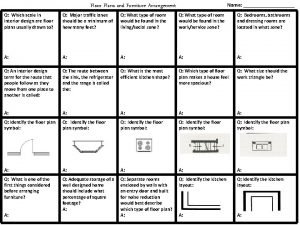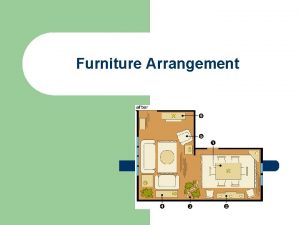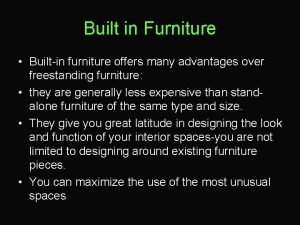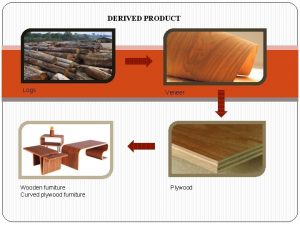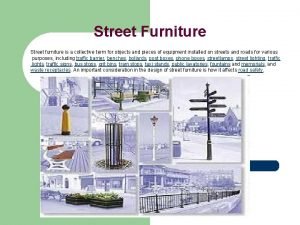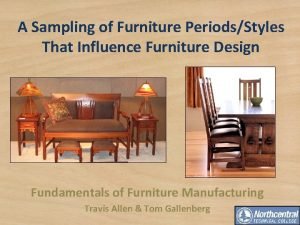Furniture Arrangement 1 LIVING AREA l Activities that










- Slides: 10

Furniture Arrangement 1

LIVING AREA l Activities that commonly take place in living areas: – l The ideal diameter for the primary conversation area: – l Conversation, recreation, dining, entertaining, hobbies, relaxing 8 -12 feet Secondary furniture grouping: – 2 Seating for 2 -3 people, a piano, a desk or a chair for one person

SPACE l Minimum dining size for four people. – 80 square feet l Space required to seat four to eight people and place a hutch and buffet in the room: – 180 square feet 3

FAMILY ROOM 4 l Activities that take place in family rooms: – Games, hobbies, tv viewing, dancing, active play l Furniture to put in a family room: – Durable and easily-maintained furniture

BEDROOM l Three purposes of the sleeping/private areas of a home: – l Three types of space that should be provided for each person in a bedroom: – l Sleeping, bathing, dressing Sleeping, storage, dressing Space that should be left on each side of a bed: 5 – – 22 inches Exception: Twin beds can be made from one side

CLOSET/DRESSER l Space needed in front of a chest of drawers or dresser in order to open drawers – l Recommended clearance space in front of a closet: – l 40 inches 33 inches Dressing circle: 6 – 42 inches

FUNCTION/TRAFFIC FLOW l l Function: – How a space will be used. – Dictates the selection and arrangement of furniture. How can you combine functions with furniture arrangement? – Living and dining areas can be combined. – Drop-leaf table can double as a sofa table. – Bedroom can serve as an office, dressing room, reading room etc. 7

FUNCTION/TRAFFIC FLOW Cont. l l Mechanical or architectural functions that must be considered when placing furniture: – Air circulation vents, doors, windows, electrical outlets, phone jacks, television cables or antenna lines, fireplaces, and stairs How to control flow of traffic: – Place furniture at key locations to direct traffic flow or restrict or redirect traffic 8

BALANCE/FOCAL POINT l 9 Create a feeling of balance in a room: – Opposite walls should lend visual weight – Furniture, doors, windows, and fireplaces should be balanced – Visual mass is more important than dimensions – Groupings should be balanced – Do not overcrowd the room with furniture

Furniture Arrangement l Use furniture to emphasize a focal point: – Group furniture around a focal point l – l Example: a window or fireplace If the room lacks a focal point, use a piece of furniture as a focal point – for example, a chest Groupings for seating arrangements: – 10 Straight line, L-shaped, U-shaped, Box shaped, Parallel
